December 2024
Biodiversity
A time for feasting
in BiodiversityShare:
A time for feasting
The photographs in this story were taken 10 days apart. In the first two you can see the elephants, of all ages, hurrying across the road, their skins hanging heavy on their frames. The first rains had arrived after the drought, and the new green growth had started pushing through, but it wasn’t yet plentiful and easy to harvest.
The next three photos show the same herd of elephants feasting in a meadow of tribulus flowers. It was a far calmer sighting, all the adults were relaxed and content to stand and harvest as much as they could, while the youngsters were free to play and cavort.
Putting the complex issues of managing healthy elephant populations aside, it was a simple joy to watch the youngsters, two in particular, have some fun.
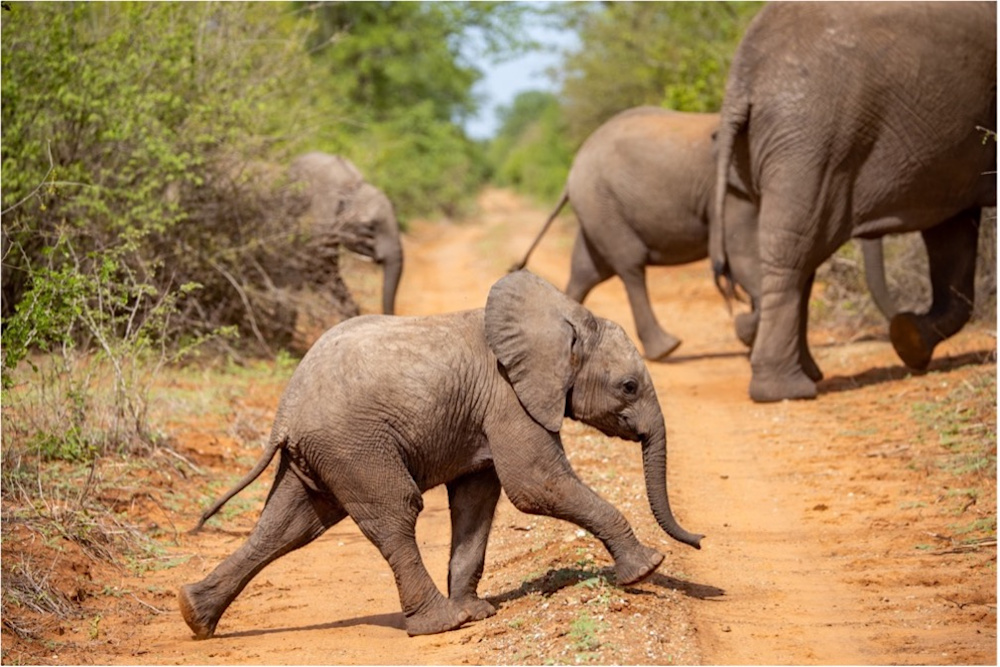
Play helps baby elephants develop the social skills necessary for life within their herds. Through it they practice communication, cooperation, and conflict resolution. It strengthens their muscles and coordination and an important part of this is learning how to control their unruly trunks.
These two were mock fighting and wrestling, and the goal seemed to be to chase and climb on one another. Neither of them had tusks showing yet – they first appear when a calf is about two years old. Play definitely gets a bit more rough when armed with two little daggers!
It was probably one of the first times in their young lives that they could relax and experience joy after the months of stress for the adults to find enough food and water.
Baby elephants form lasting bonds with other elephants in their family herd. Herds are led by a matriarch, and it’s usually young bulls, in their teens, that leave the herd and start living independently while the females remain in the family herd.
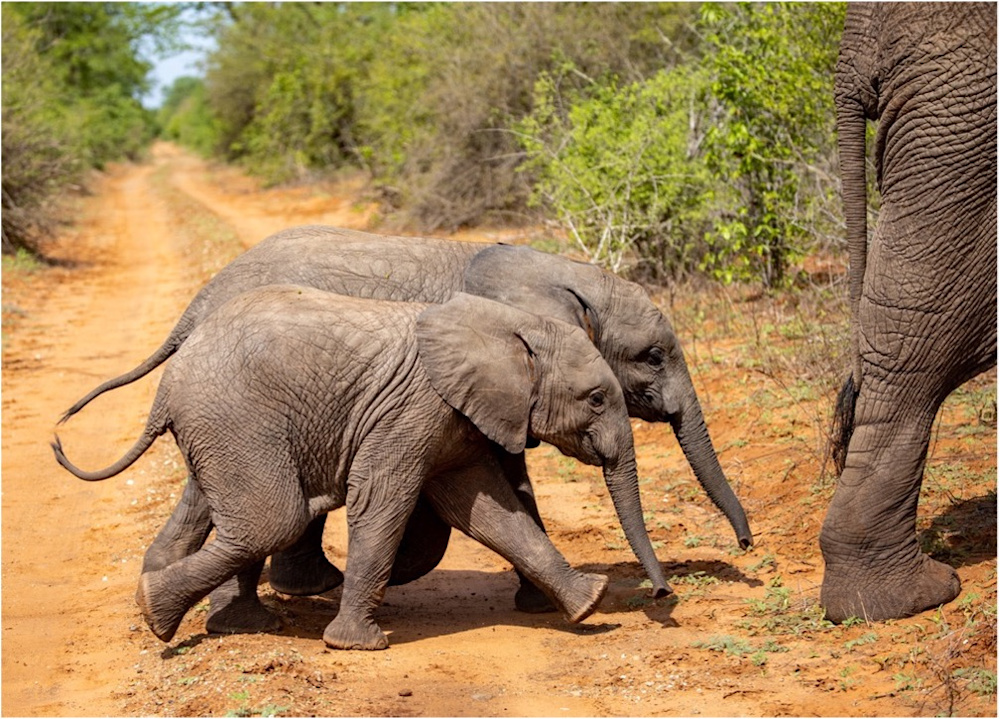
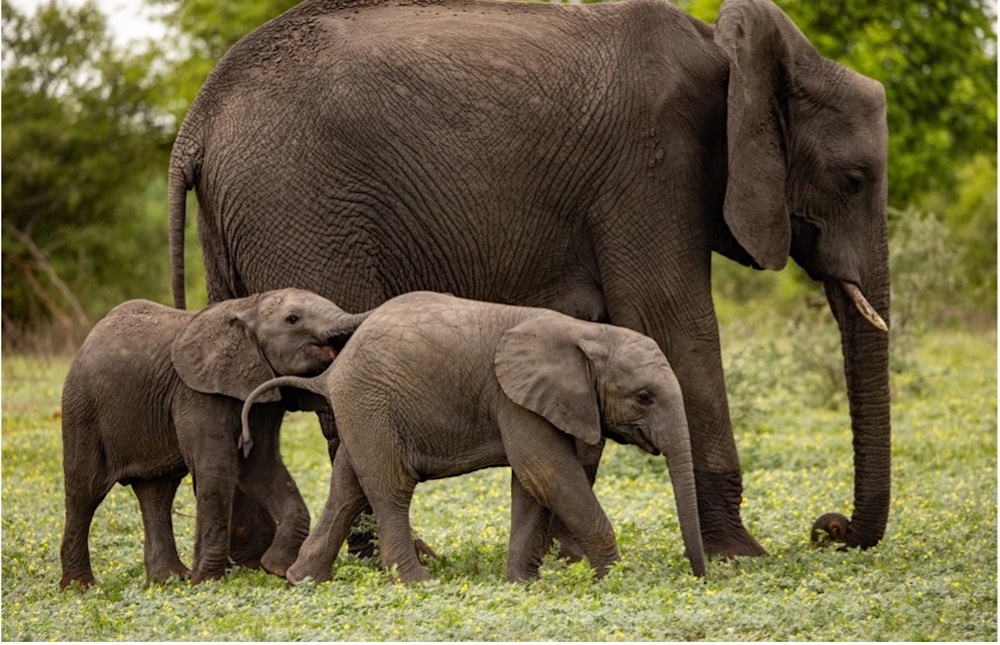
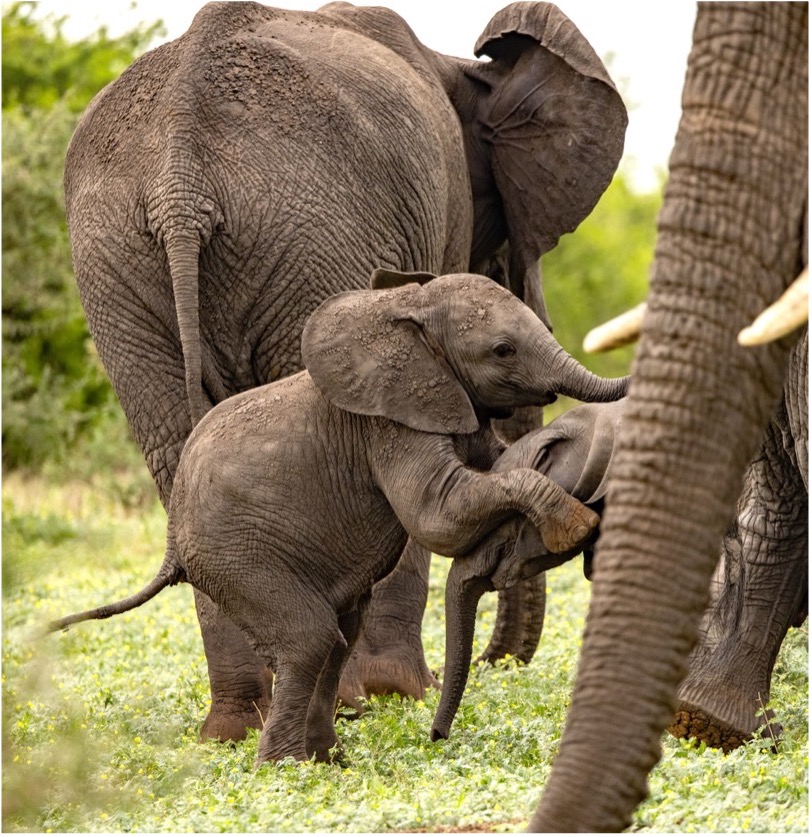
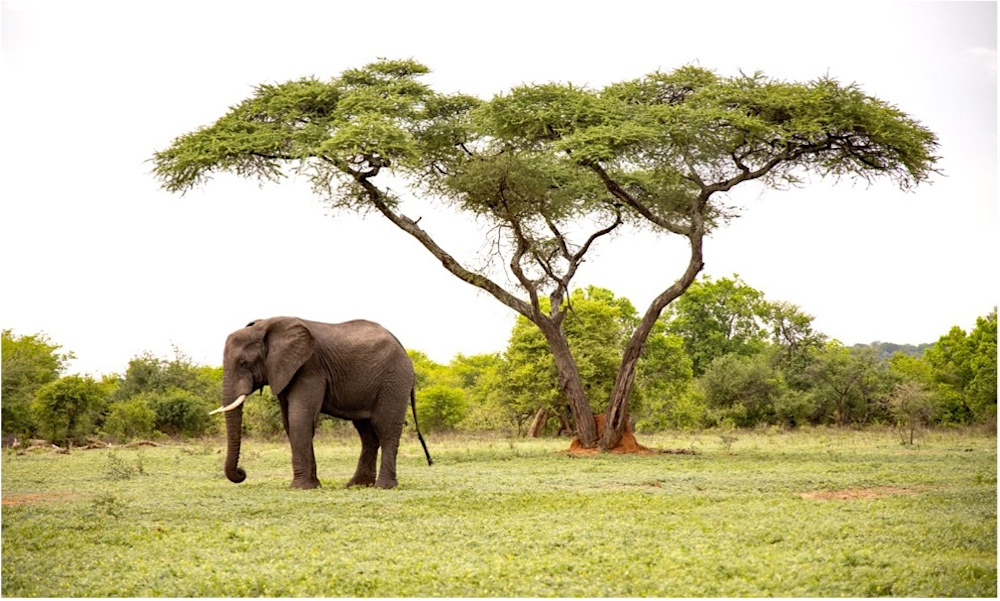

By Jenny Hishin
Author / Field Guide


